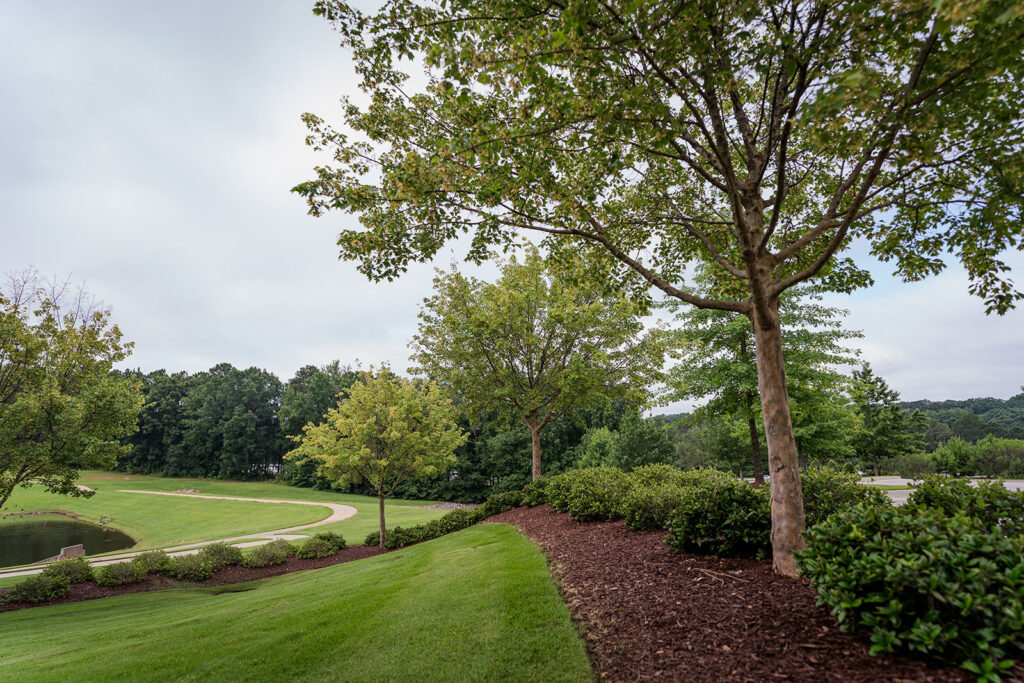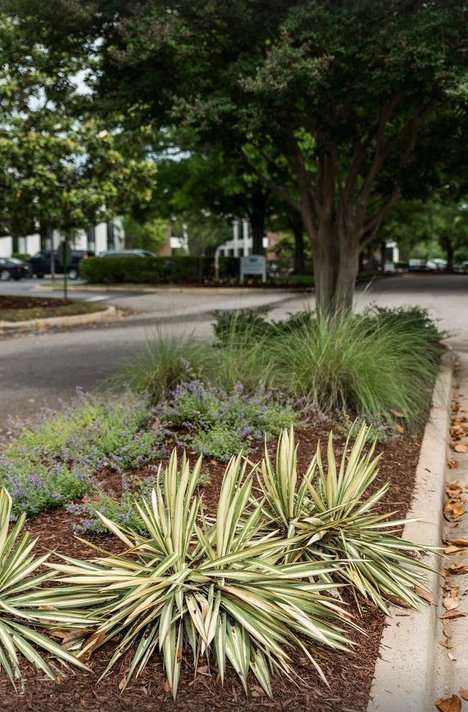A healthy, thriving landscape on a new project begins during the design phase by putting the right plants in the right places. This important step can significantly reduce the amount of maintenance it will require. That’s why it is crucial to plan your landscape with sustainability in mind.
Existing commercial property can also be strategically renovated to create a more thriving and sustainable landscape.These enhancements can be completed all at once or in phases.
Here are 4 ways to optimize your landscape for low maintenance:
- Understand your site conditions before selecting plants.
Several factors determine the types of plants that will thrive, so consider conducting a site analysis to identify some of these factors:
- Soil Type: Understand its pH level and nutrient content making appropriate adjustments before planting.
- Sunlight Exposure: Choose plants that match the light conditions (full sun, partial shade, full shade).
- Water Availability: Select drought tolerant plants for areas with limited water and vice versa for moisture loving plants.
- Local Climate: Consider the climate zone and select native or well-adapted plants that can withstand local weather conditions.

- Select native plants as much as possible.
Native plants are naturally adapted to the local environment and typically require less water, fertilizer and pesticides. They also provide habitats for local wildlife and promote biodiversity.

- Group plants with similar needs.
Grouping plants with similar water, light and soil requirements can drastically reduce the inputs needed for maintenance. This practice, known as hydrozoning, ensures that each plant receives optimal care without wasting time and resources like:
- Water: optimize irrigation and reduce water waste by creating watering zones.
- Fertilizer: reduced amounts of fertilizer since plants are fertilized in groups.
- Pest management: more efficient pest control since plants have similar resistance.

- Utilize mulch and ground cover plants.
Mulch and ground cover plants play a vital role in conserving soil moisture, regulating soil temperature and suppressing weed growth. Organic mulches, such as wood chips and straw, gradually decompose, enriching the soil with nutrients. Ground cover plants create a living mulch that reduces the need for chemical herbicides.

About Heritage
Heritage offers a variety of services to help companies achieve net-zero, water-positive, and zero-waste goals, starting with the right plants in the right places. We also know it is key to find a balance between sustainability and function, so we have solutions for all projects ensuring safety, visibility and public access to the site.
Our professionals can optimize your landscape to make it more sustainable and low-maintenance, handling everything from planning to planting. Click here to get a quote today.

